Happy New Year everybody! We hope and trust that you had a fulfilling holiday season to finish 2017 strong.
With the passing of another year, people often reflect on the accomplishments and their goals. I used to be one of those people who considered “New Year’s Resolutions” to be a waste of time, as you can generally expect them to be broken or cast to the wayside within 3-4 weeks.
According to research from the University of Scranton, less than 8% of people report achieving their New Year’s Resolutions. Think of how many people join gyms at the start of a New Year, or how many people start diets in January that fizzle out.
Despite knowing those trends and statistics, I’ve started making New Year’s Resolutions in order to encourage myself to continue to improve. Last year, I set out to read two dozen books: and I ended up reading a total of 29. I also made it a goal to get up at 5AM on work days so I would have some quiet prep-time for my day. These goals worked hand-in-hand to help me learn and grow as a person, as well as be ready to hit the ground running when I got to work.
Even though I know that many New Year’s Resolutions fail, I still like to make them and have some skin in the game.
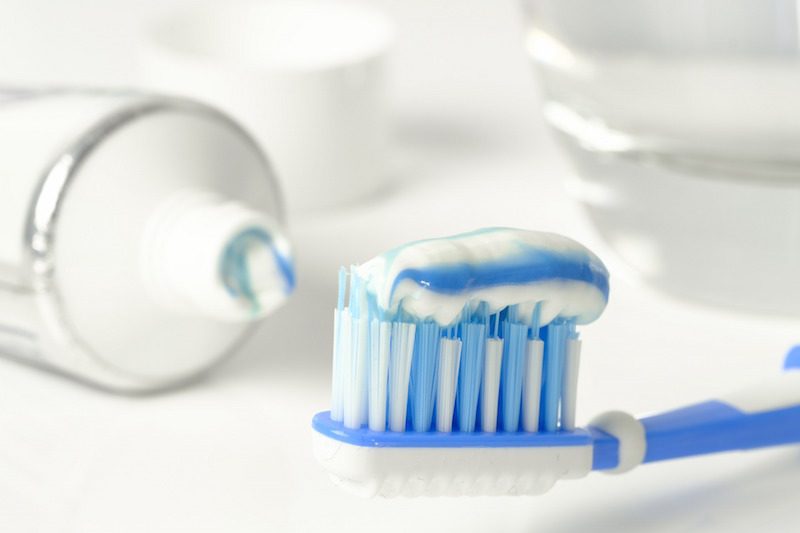
A New Toothbrush for a New Year
I realize that I might not be able to convince you to make New Year’s Resolutions, but maybe I can at least shed some light on when old things should be replaced with new things, since we are talking about the New Year. Specifically, how should you care for your toothbrush and when should you get a new one?
According to the ADA, toothbrushes should be replaced every 3-4 months. You may need to replace them more often if the bristles are fraying. Another caveat is that children’s toothbrushes often wear out more quickly than an adult’s. Why is that? Children tend to chew on their toothbrush bristles causing them to fray and wear out more quickly.
The Difference Between Soft and Worn-Out Bristles
Dentists recommend using a soft bristled toothbrush so that you won’t inadvertently damage your gums. If we recommend soft bristles, and we know that bristles that are frayed and “broken in” are softer than when you first started using a toothbrush, what’s the big deal?
Well, a frayed or matted toothbrush won’t be as effective at removing the plaque and food debris that builds up on your teeth. New bristles are specifically positioned and designed to reach those hard-to-reach nooks and crannies.
Once a brush starts to fray, those bristles are going off and doing their own thing, not brushing or reaching the places they are meant to.
Don’t let that happen to you! Our recommendation is to replace your toothbrush about four times a year, and maybe even more often for your child depending on the wear and tear you observe.

Oral Hygiene At Home
Get more tips on how to improve your child’s dental habits in the new year!
A Dr. Will Toothbrush Inspection
After reviewing the ADA’s official recommendations, I decided that I ought to do an “in-home-inspection” at my house to review the state of our toothbrushes.
My wife and I help brush all of our kids’ teeth (much to my eldest child’s chagrin), so I already had a general idea of the condition of everyone’s toothbrush. Still, I thought it might be helpful to show some real-world examples of what worn out toothbrushes look like.
If you look at the pictures below, you’ll notice that the blue toothbrush is in pretty good shape and ought to last for a while longer. The rest of these toothbrushes really need to be put out to pasture.
The Good, The Bad, and The Ugly
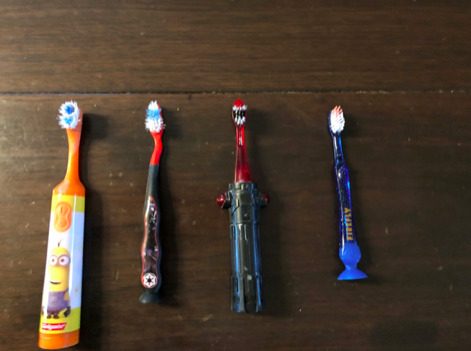
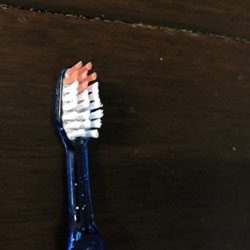
This one is good to go.

Note the frayed bristles, this one is on its last legs.
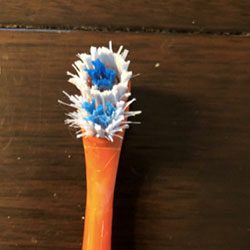
Yikes! All the bristles are frayed and crusty. We need to put this one out of its misery.
How Can I Prolong the Life of My Toothbrush?
There are a few things that you can do to help prolong the life of a toothbrush. Of chief importance is that the toothbrush is well-rinsed and stored in an upright position. This helps to rinse away the toothpaste, food debris and plaque, and microorganisms that may accumulate on your toothbrush as you brush.
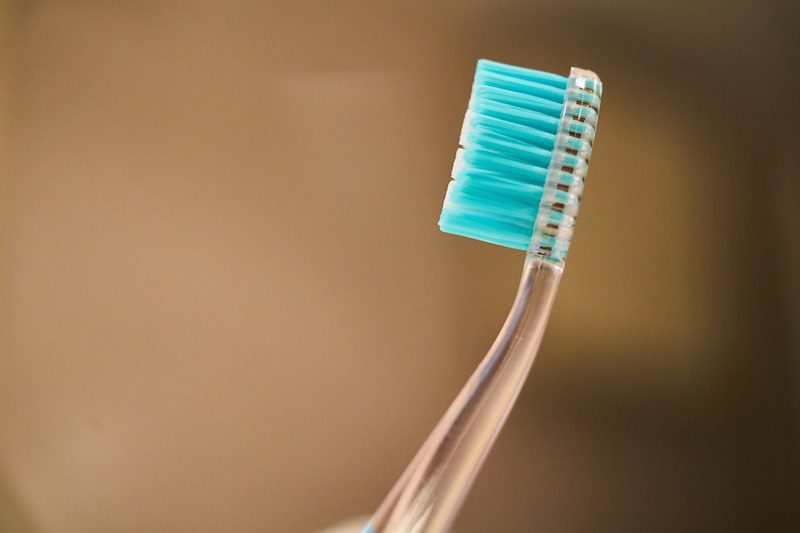
You can also sanitize your toothbrush to help prolong its life, although this is optional. There are commercially available toothbrush sanitizers, which may help clean the microorganisms from the toothbrush. To be allowed to advertise as a sanitizer, companies have to submit data to the FDA that proves that 99.9% of bacteria is removed after use.
While these are effective, toothbrush sanitizers probably aren’t necessary since, at this point, data doesn’t really support that healthy individuals are at risk of developing infections from bacterial accumulation on your toothbrush. Your gums and immune system act as defense in protecting you from these bacteria. They may, however, be useful if your toothbrush gets dropped on the bathroom floor. If you’re concerned about bacterial buildup on your toothbrush, these are an excellent option to help put your mind at ease.
You could also place your toothbrush in the dishwasher if it has a sanitation or sterilization cycle. Be advised that not all toothbrushes will stand up to that heat (and obviously electric toothbrushes would be ruined after a cycle in the dishwasher!). If you choose to “sanitize” your toothbrush in the dishwasher, be sure to inspect it after to ensure that the bristles haven’t frayed or melted together.
The final thing you can do to ensure that your child’s toothbrush lasts as long as possible is to be active and assist them with their toothbrushing. This allows you to keep an eye on the toothbrush, preventing them from chewing on the bristles, and knowing when they are worn out and ready for replacement.
We’ve talked about this before, but children lack the dexterity to effectively brush their own teeth until they are at least 10 years old. Hopefully, you’re already doing this, but if not, maybe it could be one of your New Year’s Resolutions!
Dental Resolutions
If you have any questions about the life of you or your child’s toothbrush, toothbrushing in general, or any dental resolutions for the year you’d like to check off your list,
don’t hesitate to give us a call at (434) 817-1817. We’d love to help any way we can.
Keep Smilin’
– John
Additional Resources on Toothbrush Selection and Maintenance:
ADA Statement on Toothbrush Maintenance:
http://www.ada.org/en/about-the-ada/ada-positions-policies-and-statements/statement-on-toothbrush-care-cleaning-storage-and-
ADA Approved Toothbrushes:
http://www.ada.org/en/science-research/ada-seal-of-acceptance/ada-seal-products/product-category?supercategory=Toothbrushes

A graduate of Loma Linda University Dental School and a resident in the Loma Linda Dental Anesthesiology Program, Dr. Will received extensive education in pharmacology, physiology, internal medicine, and general anesthesia. Dr. Will is a member of the Special Care Dentistry Association and the American Society of Dentist Anesthesiologists. He’s also a Diplomate of the American Dental Board of Anesthesiology. Dr. Will believes every patient should be treated with kindness and respect and is focused on treating the unique dental and oral health needs of all young people.


